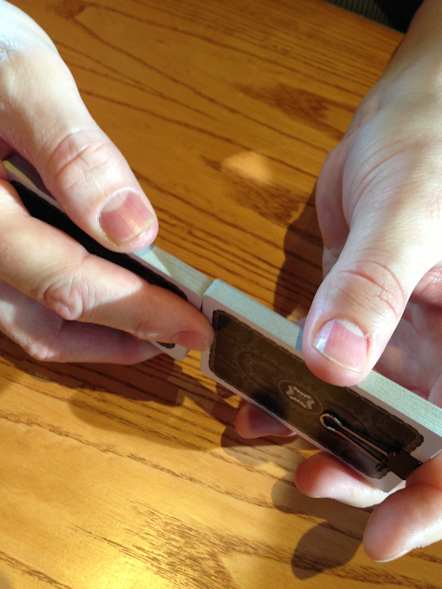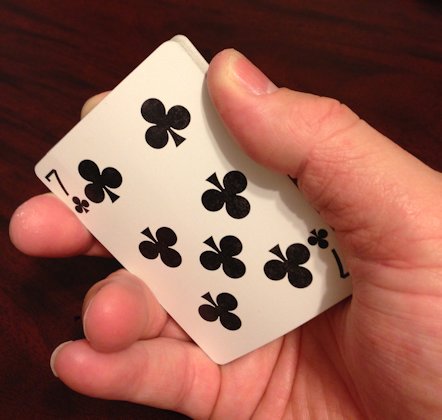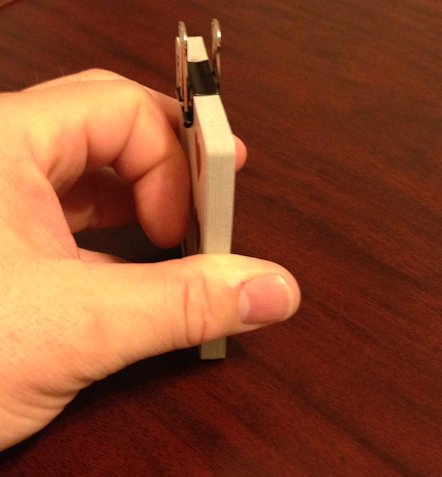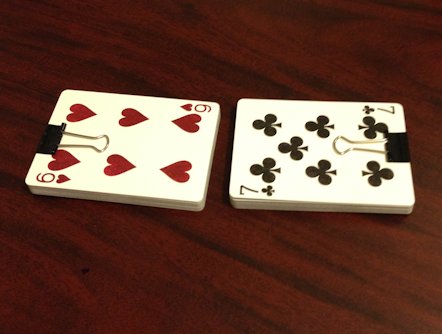Stupid Faro
Stupid Introduction
Man! Stupid Faro Shuffle. I have a love/hate thing going with the Faro. On the one hand, you can be an amazing, talented, entertaining, professional magician without ever learning the Faro. On the other hand, however, there are so many great effects that can be done if you do know the Faro. Unshuffled by Paul Gertner comes to mind. Or how ’bout getting from new deck order to our friend Si Stebbins with just a few Faros and a displacement or two. How ’bout . . . How ’bout . . . How ’bout . . . I could go on and on, but I won’t.
The bottom line is that the Faro is a valuable tool. I’ve been the rounds with this thing, and could never quite master it. The few times that I did nail it taught me something, and it’s that “something” that is this month’s free magic trick. Okay; fine . . . it’s not technically a trick, but rather, it’s a technique for practicing your Faro.
Stupid Flush Cards
The key to a smooth perfect interweaving of the cards, is to have perfectly squared cards in each packet. Until you can get those darn cards perfectly flush, you’ll never get your Faro down. There are many grips and techniques to get the cards squared, and I’ve mastered none of them. However, the images below will show you grips and where the perfect squaring is supposed to happen. Don’t worry, we’ll get to my breakthrough in a moment. But you have to start here.
The first photo shows the left hand’s grip; The second shows the right hand’s position. The packet in the right hand is pressed against the base of the right thumb and the base of the right pinky. This is where the packet squaring is supposed to happen on the short ends. Then on the long ends, you’ve got the right thumb pad and the middle finger pad.
On the left hand, you’ve got the bottom of the left index finger tip keeping the short end flush and the pads of the thumb and middle finger keeping the long ends flush. Then you’ve got the left pinky under the packets and the right index finger on top of the packets acting as guides to keep the top and bottom of each packet kind of “squished” together.
From that point, theoretically if you you angle the inner corner of the right packet and push it into the left hand’s inner corner, you’ll get a perfect weave. The problem is that it’s hard. The cards don’t stay flush. The cards don’t stay “squished.” You end up putting too much or too little pressure on the top and bottom or on the sides. Obviously, after a ton of practice you start to get a sense of the pressure points and how it feels, etc. For those of you who don’t have that kind of time, I’ve come up with a cool little idea that will drastically reduce your learning curve.
Not So Stupid Binder Clips
Divide your deck into two piles of 26 cards each. Then stand them on their short end and tap them square on a flat surface (figure below). Once they’re square, put a binder clip on one end. Repeat for the second packet. Now you have two perfectly squared packets. This will make the squaring/flush step no longer necessary. All you have to focus on, for the time being, is the proper pressure needed to weave the corners. You can still use your left pinky and/or right index finger for guides. Also, this technique does not guarantee a perfect weave every time, but the odds go way up. If you were getting 1 out of 20 to work before, you’ll likely hit 10 out of 20 times or better.
The goal is to get the knack for what the pressure feels like. Once you’ve got that experience and you know what it’s supposed to feel like, then you can focus on your squaring techniques. Meanwhile, while you practice with the binder clips on, continue to maintain all of the pressure points and hand positions. That way when you’re ready to take off the clips, your hands will be trained to hold the cards properly.
 You’ll then still need to spend a fair amount of time practicing the flushing of the cards and keeping them aligned, but you’ve cut miles off of your journey because you’ve now got the weave touch mastered. Finally, keep in mind that there are many different ways to hold the cards for the Faro shuffle. Use whatever method you’re used to. I prefer the handling shown above, but whatever you’re comfortable with is best. Of course, remember that this is, obviously, just a practicing technique. Don’t be retarded and try to use binder clips in performance.
You’ll then still need to spend a fair amount of time practicing the flushing of the cards and keeping them aligned, but you’ve cut miles off of your journey because you’ve now got the weave touch mastered. Finally, keep in mind that there are many different ways to hold the cards for the Faro shuffle. Use whatever method you’re used to. I prefer the handling shown above, but whatever you’re comfortable with is best. Of course, remember that this is, obviously, just a practicing technique. Don’t be retarded and try to use binder clips in performance.
Here’s a clip of a perfect weave using the binder clips:
I hope this helps you develop your Faro. Please comment below with any tips you learn along the way.




